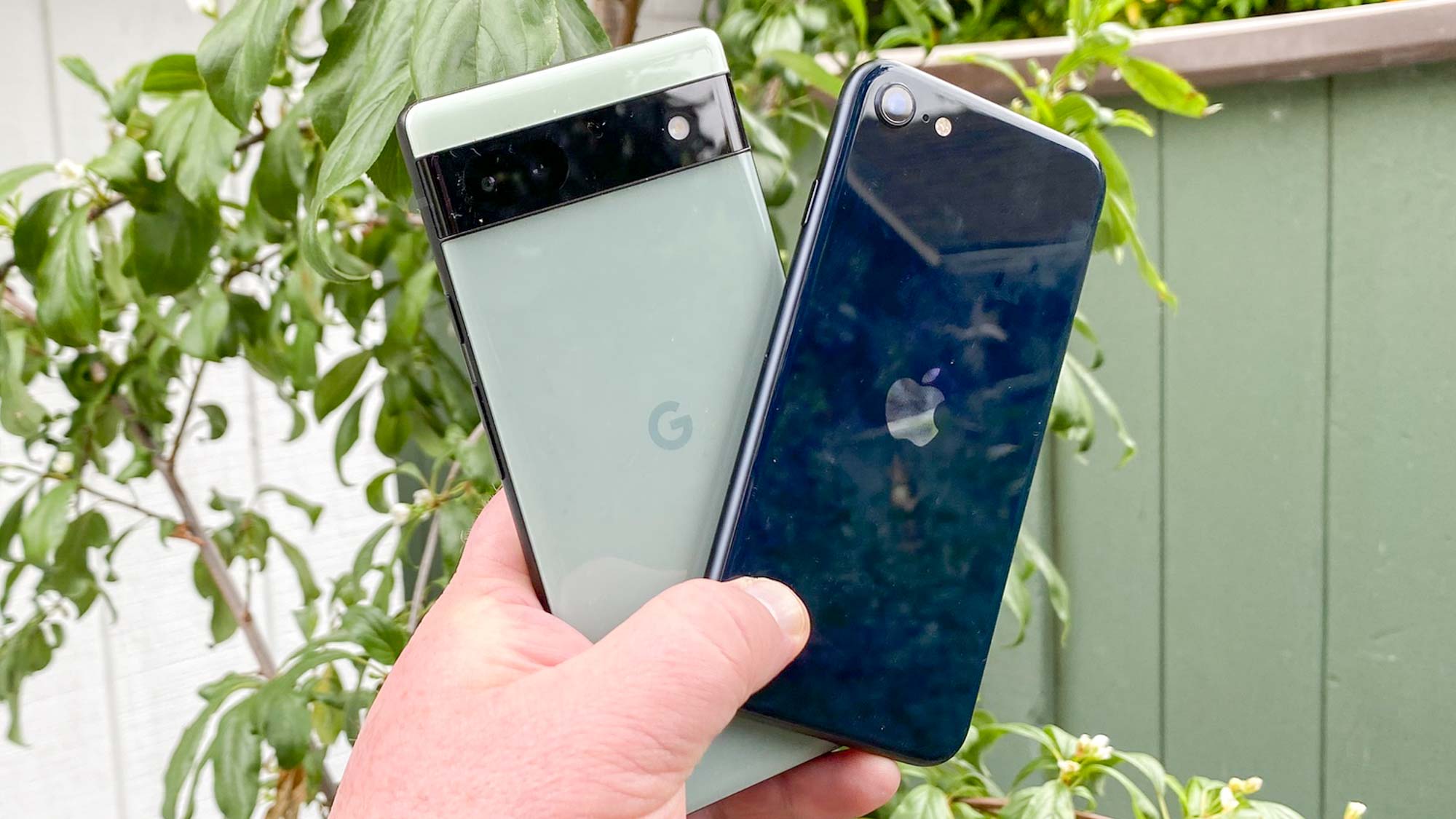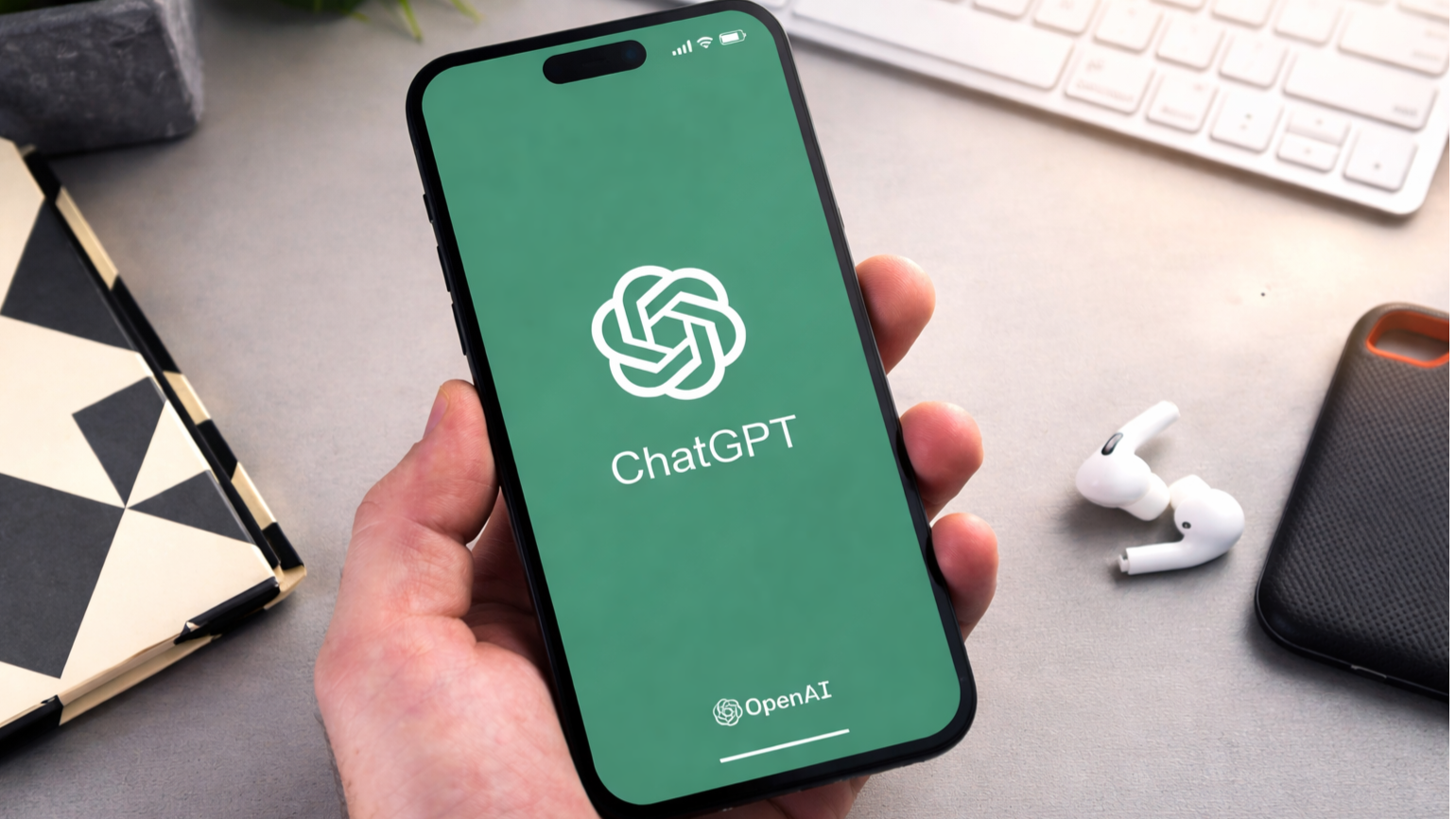Google Pixel 6a just beat the iPhone SE — and Apple should be paying attention
Here's why the Pixel 6a is better than the iPhone SE 2022

I'm an iPhone guy at heart, having used Apple's smartphone in one form or another since the days of the iPhone 3G. And for a long time, the iPhone SE has been my model of choice, thanks to its compact size and equally small price tag. I bought the original iPhone SE when that phone first came out and I used it until its charging port gave up the ghost.
A new model, the iPhone SE (2022), came out this spring, but if I was in the market for a phone right now, it wouldn't be my choice for a new device. And the $429 device certainly wouldn't be my pick for the best cheap phone under $500. Instead, if I were looking to save money on a discounted phone, the one I'd turn to would be the newly unveiled Pixel 6a from Google.
That's not necessarily a knock on the iPhone SE, which is still a solid option for a lot of people even with its flaws. Instead, my recommendation is more a reflection of all the things Google got right with the Pixel 6a. Google simply packed more value into its sub-$500 phone, showing Apple what it takes to build a more compelling budget device.
As our Google Pixel 6a vs. iPhone SE (2022) face-off reveals, choosing between those two phones boils down to the one that makes less of distinction between a budget device and a flagship phone. Right now, that's the Pixel 6a.
Google Pixel 6a vs. iPhone SE: A tale of two phones
You wouldn't necessarily think that if you judged a phone by its surface. When I hold the Pixel 6a in one hand and the Pixel 6 in another, it's pretty easy to tell which one's the cheaper device, and not just because the Pixel 6a has a smaller screen. The plastic feel of the Pixel 6a is noticeably different than the glass back of the Pixel 6. It's very clear where Google saved the money to offer the Pixel 6a at such a low price.

Speaking personally, though, I'm fine with a budget phone that feels like a budget phone if its more crucial features match what I'd get from a more expensive device. In my experience, that's exactly what you get with the Pixel 6a.
Apple attempts something similar with the iPhone SE (2022). After all, that phone runs on the same A15 Bionic chipset found in the current iPhone 13 lineup. Buy the SE, the argument goes, and you get the same world-beating performance as Apple's most expensive handsets — and with 5G connectivity to boot. It's a compelling case for a phone.
Get instant access to breaking news, the hottest reviews, great deals and helpful tips.

The problem is, the iPhone SE shares few other attributes with the rest of the iPhone lineup. Its design is straight out 2017, with beefy bezels that feel out of place in a world with edge-to-edge screens. The iPhone SE continues to offer just one camera, and it's one with a night mode for better low-light photos. As with the Pixel 6a, you gotta cut corners somewhere to offer a cheaper phone, but Apple is asking for a lot of trade-offs in exchange for the iPhone SE's lower price.
What the Pixel 6a does right
Contrast that with what Google did with the Pixel 6a. Cheaper material aside, the new phone mirrors the distinctive look of the Pixel 6 that Google introduced last fall, with a horizontal camera bar spanning the length of the phone's back. The Pixel 6a has an under-display fingerprint sensor, just like the Pixel 6. (In fact, the 6a's sensor is much more responsive.) Even the front camera is in the same place on the phone's display.
The Pixel 6 boasts a main camera with better resolution — 50MP versus 12.2MP for the Pixel 6's wide lens — and the Pixel 6 Pro throws in a telephoto lens to trump the Pixel 6a's dual-camera setup. But the Pixel 6a still exploit's Google's expertise with computation photography to produce some very nice-looking pictures — so nice, in fact, that we think the Pixel 6a is the best camera phone under $500. It certainly topped the iPhone SE when we put the phones head-to-head.
In the most significant similarity of all, the Pixel 6a features the same Tensor chipset Google used in the rest of the Pixel 6 lineup. That means all the machine learning-fueled experiences that Pixel 6 owners can enjoy are also available for less on the Pixel 6a, Your sub-$500 phone can screen phone calls, provide on-the-fly translation and even give you one-tap editing for removing photo-bombers from your pictures. That's a pretty compelling set of features for a budget phone.
If there's a flaw to Google's approach, it's that the price difference between the $599 Pixel 6 and the $459 Pixel 6a isn't as great as the $250 gap between the iPhone SE and the iPhone 13 mini, the next cheapest iPhone with an A15 Bionic chipset. Rather than get a Pixel 6a, some shoppers may be tempted to pay up to get the Pixel 6 and its better camera and bigger screen. I'm sure Google will be crying all the way to the bank.
The important point here is the different ways Apple and Google have approached their budget phones. Apple clearly wants more of a distinction between the iPhone SE and its flagship device. Google's clearly less concerned with that. There's certainly a business case to be made for Apple's approach, but I know which phone delivers more value to would-be owners, and it's not the SE.
Philip Michaels is a Managing Editor at Tom's Guide. He's been covering personal technology since 1999 and was in the building when Steve Jobs showed off the iPhone for the first time. He's been evaluating smartphones since that first iPhone debuted in 2007, and he's been following phone carriers and smartphone plans since 2015. He has strong opinions about Apple, the Oakland Athletics, old movies and proper butchery techniques. Follow him at @PhilipMichaels.

